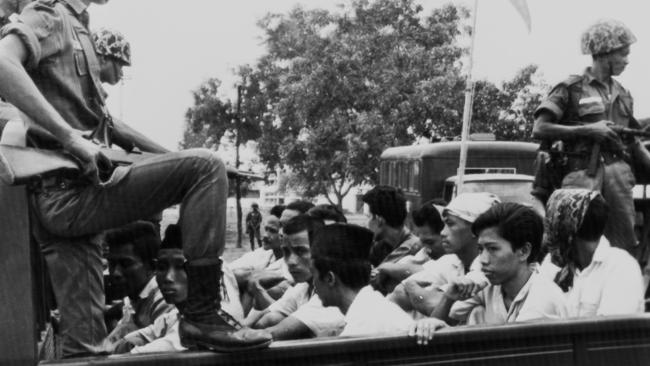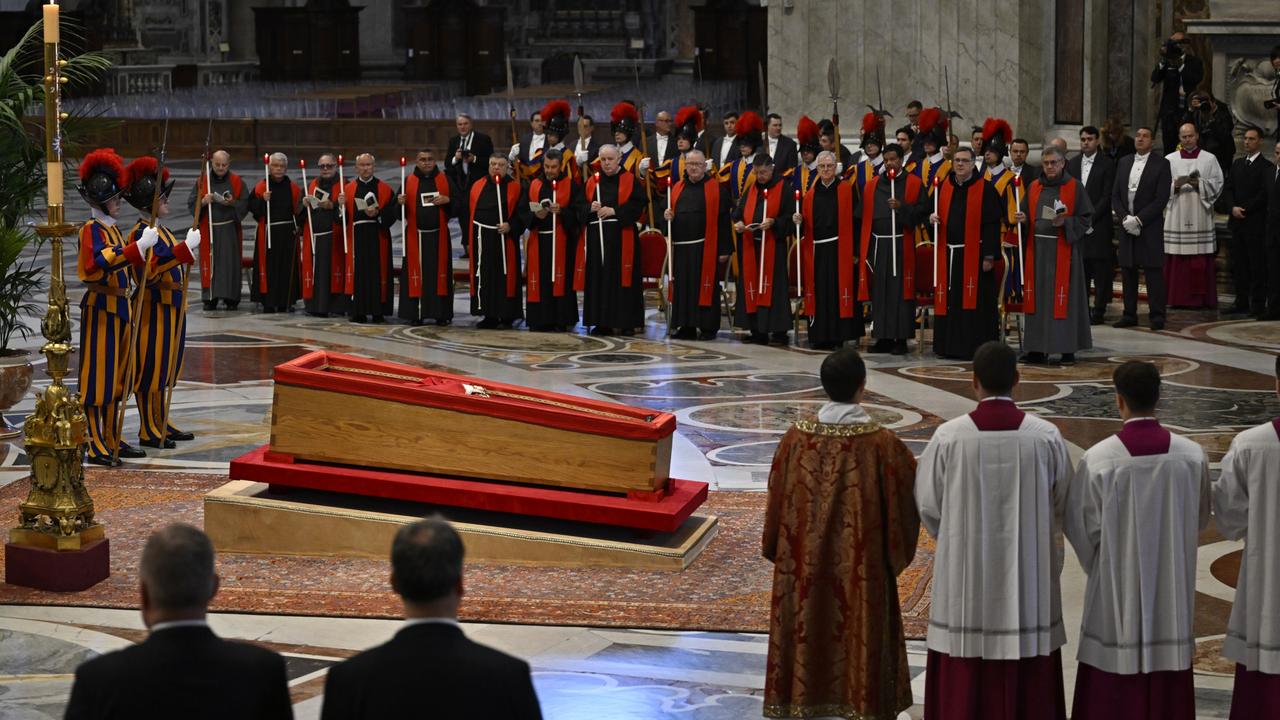Puppet masters pulling strings 50 years after killing fields
Protection from the government and military has been sought for many mass grave sites and witnesses in Indonesia.

At 11am yesterday, a typically chaotic Jakarta Friday, Bejo Untung fought traffic to hand-deliver a letter to President Joko Widodo’s trusted lieutenant with a request that, if granted, could go a small way towards resolving Indonesia’s open wound.
Addressed to Security Affairs Minister Luhut Pandjaitan the letter seeks a guarantee of protection from the government and military for the many mass grave sites, and witnesses to the killings of hundreds of thousands — perhaps more than a million — of Indonesians accused of communist party (PKI) sympathies in 1965 and 1966.
If that guarantee is forthcoming then Bejo, imprisoned for nine years as a 17-year-old student union member, will on Monday deliver a dossier that maps sites of some of the worst massacres.
Last week, at a government-sponsored symposium on the “1965 tragedy” — an event remarkable for bringing together for the first time victims, survivors, perpetrators, government representatives and human rights groups — Luhut said he did not believe more than 1000 people were killed during the purge, and “probably fewer”.
The retired general has since challenged victims and human rights groups to deliver proof that more perished in the Suharto-led purge that would mark the beginning of his 32-year dictatorship.
The claim was puzzling given an Indonesian government fact-finding mission in the aftermath reported 78,000 were killed. The cabinet minister who led that investigation reportedly admitted subsequently he had left a zero off that figure.
The then head of the military’s Kopassus Special Command Force, Sarwo Edhie Wibowo, before he died said it was more like three million.
In 1966 Australian prime minister Harold Holt, reflecting the anti-communist sentiment of the time in a speech in New York, said of the Indonesian massacre that “with 500,000 to one million communist sympathisers knocked off … I think it is safe to assume a reorientation has taken place”.
Still, that last week’s symposium happened at all, and that the Indonesian government has said it is open to a new investigation into the death toll, is an important step, Bejo believes.
He says his organisation knows of at least 50 mass graves holding anywhere between 10 and 200 bodies each, but also of many more places where mass executions took place. Some estimates put the total number of mass graves at about 800.
North, west and south Sumatra, west, east and central Java, Jogyakarta and Bali are where the largest number of grave sites were.
While a large number may have been destroyed by half a century of development, “many, many witnesses still exist and would like to talk about the killings”, he says.
“That’s why I am meeting the minister. To make sure the government and military guarantee the sites won’t be destroyed and people won’t be oppressed.”
In 2000, 21 skulls were exhumed from a mass grave in Wonosobo, central Java.
“When we went to rebury them, Muslim hardliners came and tried to burn the remains,” said Bejo, who heads the Research Foundation for 1965 Murder Victims (YPKP 65).
Nonetheless, he insists, “now is the time for victims and survivors to open up to the government and to the international community. The minister came out with a challenge; please show us the mass graves. So this is the moment we have to explain.”
It is a position of extraordinary goodwill given the persecution survivors and relatives of victims still suffer in Indonesia today.
As many as 40 million people are still excluded from government jobs because of their families’ alleged association with the PKI.
Not all victims’ groups agree on how to proceed.
Haris Azhar, from the Commission for Missing Persons and Victims of Violence (KontraS), says previous attempts to resolve Indonesia’s gaping wound have failed for lack of government commitment, and there is no reason to believe this will be different.
“Luhut says ‘give me the proof’. We have the proof but we will not give it to the government until they come up with a very concrete mandate, a plan on how to follow up the information we give,” Azhar said.
The process must result in changes to government policy, prosecutions, compensation, he added.
Andreas Harsono, Indonesia researcher for Human Rights Watch, believes much of what is being said publicly — including Luhut’s statements — is “shadow puppetry”, designed to assuage extremists.
“The only reason the symposium ran peacefully was because police protected it and the military did not intervene,” says Harsono. “Why did they not intervene — because Luhut made some hard-line statements.”
Still, he adds, the risk of intimidation and violence remains real.
Says Azhar: “People are interested to see how justice will be upheld by this government.”




To join the conversation, please log in. Don't have an account? Register
Join the conversation, you are commenting as Logout